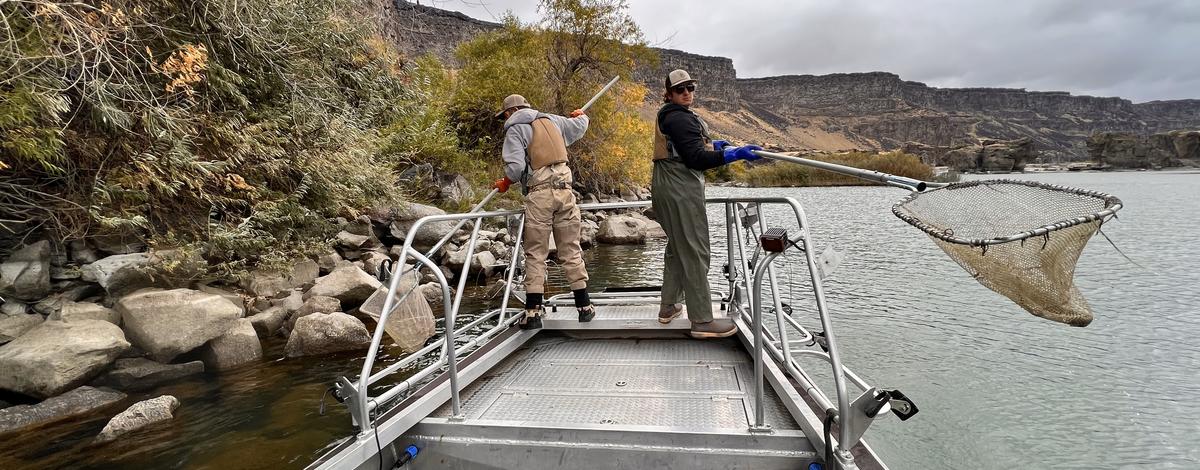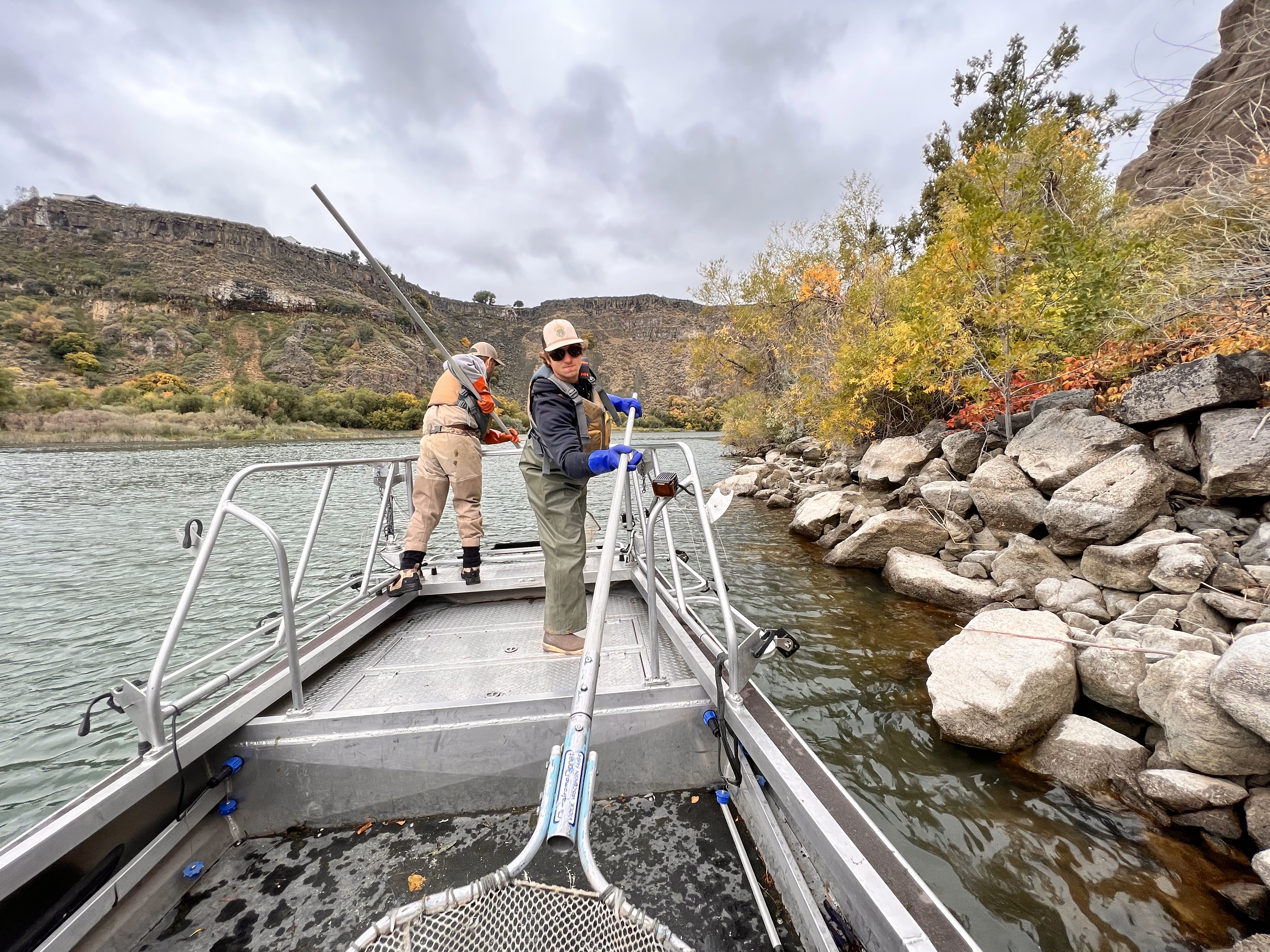On Oct. 1-2, 2023, Idaho Fish and Game fisheries biologists from across southern Idaho used non lethal electrofishing techniques in the Snake River to mark fish in three short reaches of the river. Two of the reaches were in areas where quagga mussel larvae were detected by Idaho Department of Agriculture’s monitoring program in mid-September. The third reach is at the lower extent of the treatment area where impacts to fish are not anticipated.

F&G surveys fish populations in the Snake River prior to quagga mussel treatment
F&G is trying to gauge the extent of fish mortality in the treated areas
The marks placed on the fish are a fin-clip on the tail. Later, using the mark to unmarked fish ratio, Fish and Game will be able to estimate fish population size prior to the quagga mussel treatment and develop baseline fish community information to assist our efforts in rebuilding fish populations in the future.
The data resulting from this work is important to have before the implementation of the chelated copper treatment by the Idaho State Department of Agriculture that started on Oct. 3
Fish and Game biologists expect to have some fish mortality, including sturgeon, as a result of the copper treatment. To mitigate for these losses, Fish and Game has several tools available, which include translocating adults after the treatment, hatchery stocking and natural recolonization from downstream.
These are also mitigation tools for other fish species within the treatment area. Biologists will be monitoring the effects of this unprecedented treatment and working to determine the best course of action afterward. This is an evolving situation, and Fish and Game staff will do our best to keep people informed as it goes along.
For more information about quagga mussels impacts to Idaho’s fish and wildlife resources, visit our website at www.idfg.idaho.gov/quagga.

